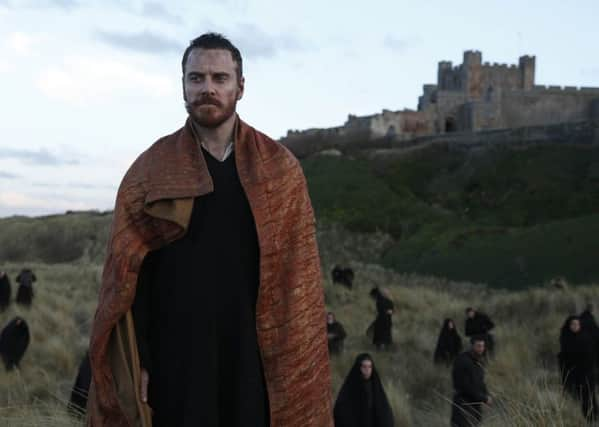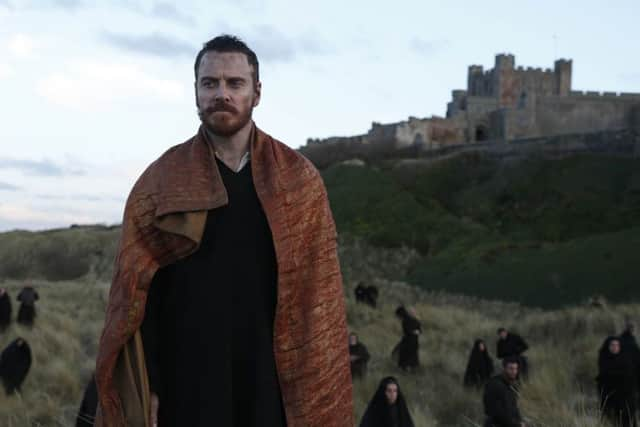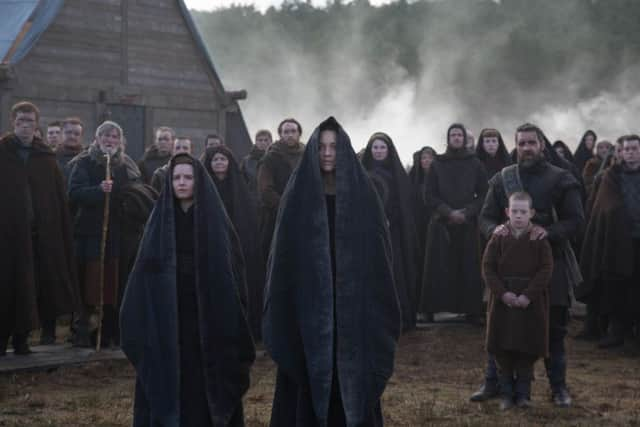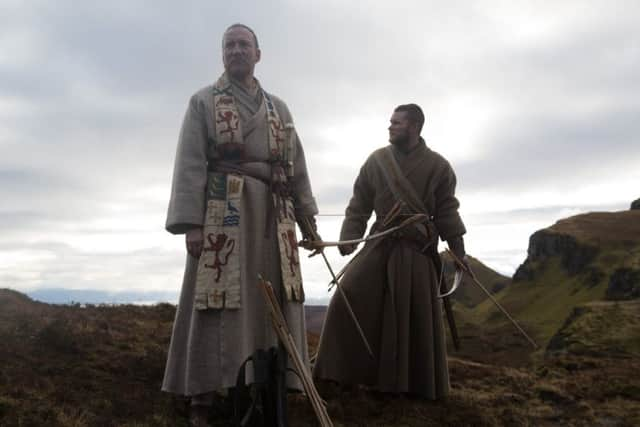How Skye was central to Justin Kurzel’s Macbeth


It was unbelievably horrendous,” laughs Justin Kurzel. The Australian director behind the new big- screen version of Macbeth is referring to Skye – primary location for his adaptation of Shakespeare’s Scottish play.
Don’t take this to mean that he doesn’t also think the rugged Highland landscape is unbelievably beautiful – he does, of course he does. But having scouted locations in the summer of 2013 when everything seemed “awe-inspiring but kind of doable”, arriving with stars Michael Fassbender, Marion Cotillard and a full crew to shoot the movie in the middle of winter last year (they shot it in the early part of 2014) was something else entirely.
Advertisement
Hide AdAdvertisement
Hide Ad“When you’re watching your production designer kind of fly across the camera and Marion Cotillard literally disappear in a bog with her hands reaching up, you realise it’s really formidable,” he says. “But that’s also what we were getting inspired by.”


It’s the middle of June and having already premiered Macbeth in Cannes the previous month (to a fairly rapturous reception), Kurzel is in Edinburgh to screen the film for the first time in Scotland. As such, it’s hardly surprising that the Scottish landscape featured in the film should be such a major topic of conversation. Kurzel was certainly excited by the prospect of shooting a significant proportion of Macbeth in its homeland, which immediately differentiates it from some of the other well-known film versions (Roman Polanski shot his version in the north of England and Wales, for instance, Orson Welles did his on a soundstage in Los Angeles, and Akira Kurosawa – his Throne of Blood is an adaptation of Macbeth – made his in Japan).
But Kurzel, who once staged the play in his former career as a theatre designer in Australia, was also keen to make the landscape an imposing character in its own right.
“I wanted it to look hard,” he says, “so you’d feel how difficult it would be to be a warrior in those times.”
A muddier, bloodier take on Shakespeare’s tragic tale of regicide, vaulting ambition and madness, the film not only capitalises on Skye’s haunting atmosphere to make the play’s more fantastical elements (the witches, the prophecy) seem more credible, it also uses it to feed into the psychological breakdown of Macbeth, played in the film by a rugged-looking Michael Fassbender. “Michael and I started talking about post-traumatic stress disorder and the idea of his visions of war being mixed in with your own psychosis – and the landscape became a huge part of that.”


One of the keys to figuring this out was thinking about Macbeth in terms of a western. Inverness, for instance, is presented in the film as a sort of “pioneer town on the edge of a battlefield,” says Kurzel, and he liked the idea of characters being isolated and brutalised by their environment – again, a trait found in many westerns. “It kind of felt like a badlands,” he says.
But if the western was one prism through which he viewed the film, Breaking Bad was another. When I catch up with Kurzel on the phone a month after the Edinburgh screening, he tells me he was struck by the parallels between Macbeth’s unraveling and that of Walter White, the chemistry teacher turned crystal-meth kingpin so memorably embodied by Bryan Cranston in the hit TV show.
“When I was editing I was watching a lot of Breaking Bad, and it was amazing how Walt’s journey towards his fatal end kind of had the same engine to Macbeth. I think there’s something inherently fascinating about the play and about that character type – particularly the dance with evil. It’s just so dark and it’s such a car crash of a play – you’re watching someone dismantle themselves before your eyes. It’s very appealing [to watch] because I don’t think the ideas are that far away from most of us. We’re all on a precipice, and we all handle grief and trauma and temptation in different ways.
Advertisement
Hide AdAdvertisement
Hide Ad“Most of us don’t respond in the same way, but we are still fascinated by those that do. We’re attracted by that darkness – and scared of it. That’s why Macbeth is done again and again.”


This version actually originated with Fassbender, who brought Kurzel on board after seeing his 2011 debut film, the ultra-bleak true-crime drama Snowtown – about Australia’s most notorious serial killer. That film was a study in the way violence liberated desperate people and Kurzel saw a continuation of that in Macbeth. “Snowtown was about what happens when violence is domesticated and becomes the norm. When Michael and I were thinking about his character, we were very interested in the idea of murder liberating him from his demons. He’s a guy who has experienced war, whose job it is to kill, and here he is being asked to murder – so perhaps that murder is not such a big step.”
Although Fassbender was on board from the start, Cotillard was only cast as Lady Macbeth after Natalie Portman dropped out. “We engaged with Natalie early on but she was in the process of preparing to direct her first film [A Tale of Love and Darkness]and the funding came through for that so she couldn’t do Macbeth. But the first person Michael and I thought of was Marion, so we very quickly asked her and were blessed she said yes.”
At the time, Cotillard was coming off the back of another gruelling drama, Two Days, One Night (for which she was Oscar-nominated earlier this year). Though she wasn’t looking to put herself through the emotional ringer again quite so soon, playing Lady Macbeth in Scotland was, she told me in an interview with this paper last year, too good an opportunity to pass up, even though it ended up being her “hardest job so far”.
Still, her casting proved beneficial in another way: playing Lady Macbeth as a foreigner (she doesn’t attempt a Scottish accent), Cotillard brought an exoticism to the role that intensified the character’s sense of isolation. For Kurzel that desperation made the character seem more human.
“I wanted to stay clear a little bit of the Machiavellian interpretation,” he says. Instead, he begins the movie with Lady Macbeth burying her only child – a tragic loss that Kurzel thought would help explain her subsequent actions. “It was important that the descent into madness didn’t become unrelatable; I wanted it to feel very simple and dignified. She’s a mother; she’s a wife; she’s desperately trying to hold on to her family and herself.
“And while she is a source of strength for her husband, she’s leading him not because of greed, but because of her desperation to hold things together.”
On the subject of holding things together, Kurzel is currently in the midst of reteaming with Fassbender, Cotillard and his Macbeth screenwriter Michael Lesslie for his next film, a blockbuster adaptation of the mega-selling video game Assassin’s Creed. “They’re very different beasts,” says Kurzel when I ask if there’s any thematic connection.
Advertisement
Hide AdAdvertisement
Hide Ad“But the game is all to do with ancestry and DNA and memory and the idea that those who come before you make you who you are today – so there is a connection with Macbeth, especially in terms of fate and destiny.”
• Macbeth is on general release from Friday